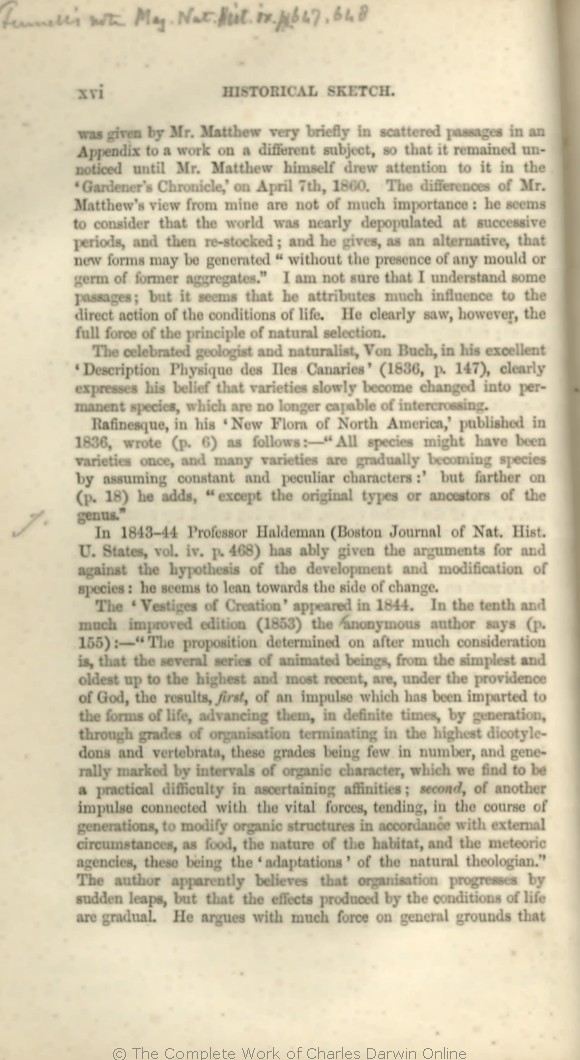was given by Mr. Matthew very briefly in scattered passages in an Appendix to a work on a different subject, so that it remained unnoticed until Mr. Matthew himself drew attention to it in the
'Gardener's | 'Gardener's 1861 1866 1869 | | 'Gardeners' 1872 |
| gives, 1861 1866 1869 | | gives 1872 |
| 4 blocks not present in 1866 1869 1872; present in 1861 | | In answer to a letter of mine (published in Gard. Chron., April 13th), fully acknowledging that Mr. Matthew had anticipated me, he with generous candour wrote a letter (Gard. Chron. May 12th) containing the following passage:— "
To me the conception of this law of Nature came intuitively as a self-evident fact, almost without an effort of concentrated thought.
Mr. Darwin here seems to have more merit in the discovery than I have had; to me it did not appear a discovery.
He seems to have worked it out by inductive reason, slowly and with due caution to have made his way synthetically from fact to fact onwards; while with me it was by a general glance at the scheme of Nature that I estimated this select production of species as an
à
priori
recognisable fact— an axiom requiring only to be pointed out to be admitted by unprejudiced minds of sufficient grasp."
|
|
|
The celebrated geologist and
naturalist, | naturalist, 1866 1872 | | naturalists, 1869 |
|
|
Rafinesque, in his 'New Flora of North America,' published in 1836, wrote (p. 6) as
follows:—"All | follows:—"All 1866 1869 | | follows:— "All 1861 1872 |
| characters:' but 1866 | | characters: "but 1861 | | characters:" 1869 | | characters"; but 1872 |
| farther 1861 1866 1872 | | but farther 1869 |
|
|
In 1843-44 Professor Haldeman
(Boston | (Boston 1861 1866 | | ('Boston 1869 1872 |
| States, 1861 1866 | | States,' 1869 1872 |
|
|
The 'Vestiges of Creation' appeared in 1844. In the tenth and much improved edition (1853) the
anonymous | anonymous 1861 1866 1872 | | ananymous 1869 |
| 155):—" 1866 1869 | | 155):— " 1861 | | 155):— 1872 |
| results, 1861 1866 1869 | |
results,
1872 |
|
first
,
1861 1866 1872 | |
first,
1869 |
|
second,
1866 1869 | |
second
,
1861 1872 |
| theologian." 1866 1869 1872 | | theologian.' 1861 |
|









